CEIR Announces 2017 Fourth Quarter Index Results, Releases New Industry Insight Report
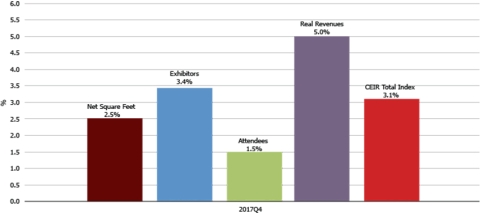
After a temporary setback in the third quarter of 2017, the growth of the exhibition industry resumed during the fourth quarter, according to Fourth Quarter Index Results conducted by the Center for Exhibition Industry Research (CEIR).
The performance of the industry, as measured by the CEIR Total Index, posted a strong year-on-year gain of 3.1 percent (see below).
Figure 1: Quarterly CEIR Total Index for the Overall Exhibition Industry, Year-on-Year Growth, 2011Q1-2017Q4
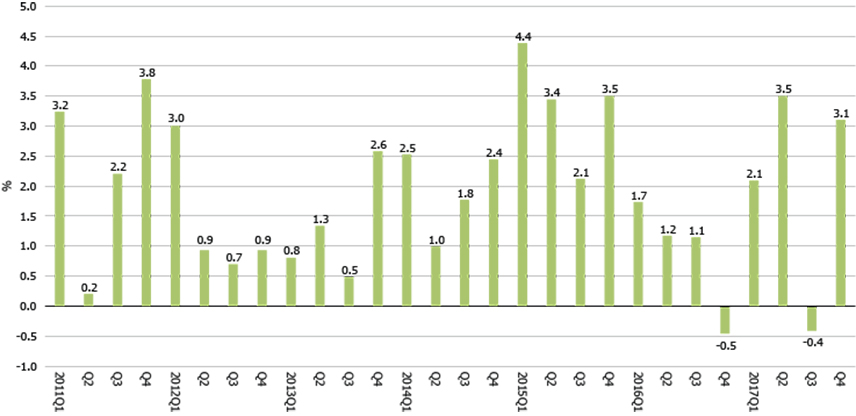
Despite displaying somewhat greater volatility, exhibitions are keeping pace with the macroeconomy (see Figure 2).
Figure 2: Quarterly CEIR Total Index for the Overall Exhibition Industry vs. Quarterly Real GDP, Year-on-Year Growth, 2008Q1-2017Q4
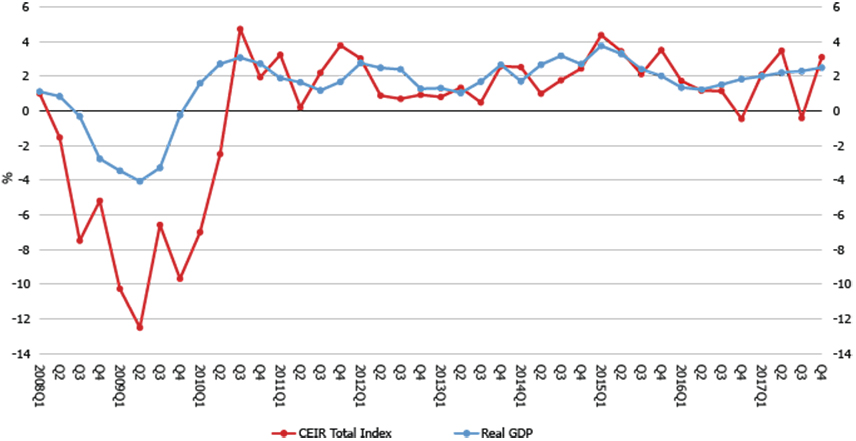
“The increase in the fourth quarter supports our prediction that economic fundamentals still point to moderate growth for the exhibition industry,” said CEIR Economist Allen Shaw, Ph.D., Chief Economist for Global Economic Consulting Associates, Inc.
Discretionary Consumer Goods and Services; Industrial/Heavy Machinery and Finished Business Inputs, and the Building, Construction, Home and Repair sectors all registered robust year-on-year gains, while the Consumer Goods and Retail Trade; Government, and Raw Materials and Science sectors posted year-on-year declines.
All exhibition metrics in the fourth quarter posted positive year-on-year gains (see Figures 3 and 4).
Figure 3: Quarterly CEIR Metrics for the Overall Exhibition Industry, Year-on-Year Growth, 2017Q4
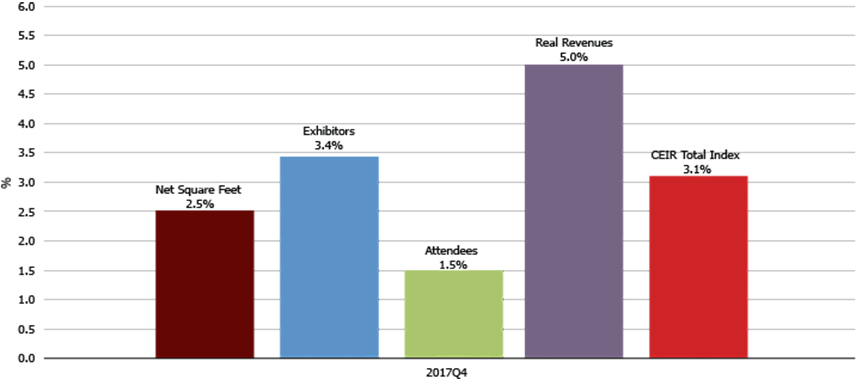
Real revenues (nominal revenues adjusted for inflation) posted the largest increase of 5 percent, followed by exhibitors which rose 3.4 percent. Net square feet and attendees gained 2.5 percent and 1.5 percent, respectively.
Figure 4: Quarterly CEIR Metrics for the Overall Exhibition Industry, Year-on-Year Growth, 2009-2017Q4
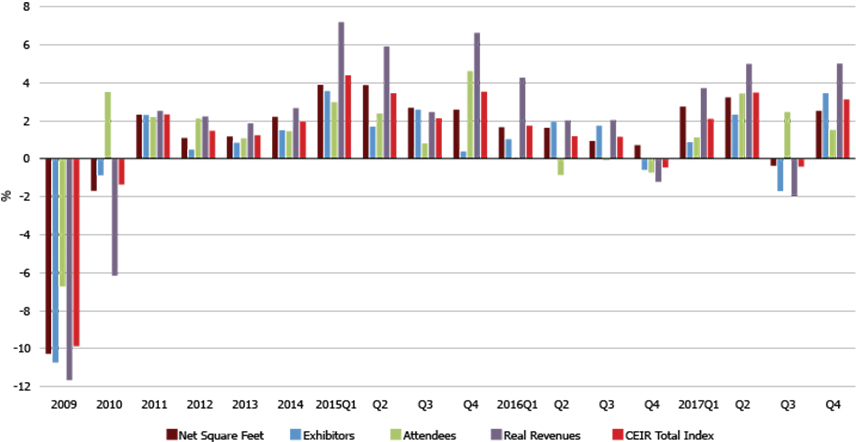
“When looking at the quarterly results for real revenue, one has to keep in mind perspective,” said Cathy Breden, CEO of CEIR.
She continued, “During the Great Recession, real revenue suffered the biggest decline among four metrics. The big fall naturally leads to a big rebound. As such, real revenue has experienced the largest recovery during the past seven years. Nonetheless, real revenue in 2017 – $10.29 billion – was still 3 percent below the peak in 2007. In addition, revenue per NSF in 2017 was still below the 2007 level.”
Earlier this week, CEIR released a new Industry Insight Series Report, Designed to Engage – How to Build Elements of Engagement Into Booth Designs written by exhibit marketing strategist, Marlys Arnold, author of Build a Better Trade Show Image and Exhibit Design that Works.
In this guide, which focuses on how to integrate effective engagement tactics in exhibit booth design, Arnold emphasizes what engagement should be in an exhibit booth.
“Information is everywhere,” Arnold writes. “People crave experiences instead, especially in a face-to-face environment.”
The seven-page report covers the following:
• Definition of engagement
• Discussion of the disconnect between what attendees want and what exhibitors are doing
• Range of engagement opportunities to consider using in an exhibit booth
• Three case studies and other examples
“The heart of a trade show is the engagement that takes place between exhibitors and attendees on a show floor,” Breden said. “It is an important, unique value of the channel.”
She continued, “Marlys’ report does a great job pulling out key trends from CEIR’s Attendee Engagement Study Series and offering examples of how exhibitors have successfully responded to them in a way that helps them achieve their overall goals for exhibiting.”
Click HERE to download the full report.


Add new comment